Buy-and-bust: An Effective Police Technique
Buy-and-bust: An Effective Police Technique
This post is to explain the basics of a common dial-a-dope police investigation. Buy-and-bust is a very effective police technique, used to verify the identity of an alleged drug trafficker who meets with an undercover police officer.
The Buy-and-Bust: An Effective Police Technique
Chatnewstoday -- online media reporting out of Brooks, Medicine and Lethbridge -- reported that three persons from Lethbridge, Alberta are facing drug trafficking charges, including being in possession of 14 ounces of methamphetamine.
https://chatnewstoday.ca/article/594987/three-lethbridge-facing-drug-trafficking-charges
The purpose of this post is not really to speak to you about the news report, but about what appears to be the kind of investigation that led to the arrest of the accused. What can be gleaned from reading the report is what precipitated the investigation and the techniques used to gather the evidence. The police technique used in this case appears to be very typical for a large number of prosecuted drug cases. The investigative model can be summarized as follows:
- A Confidential Informant (“C.I.”) reports information connecting a person to a crime. In this case, the Informant apparently provided information about a drug trafficking operation.
- Fixed with Source information, which could include anything from specific to non-specific details -- the investigation is triggered. According to Chatnewstoday, the police “set up a deal”. This suggest they were provided with contact information for the suspected trafficker (likely a telephone number), used as part of a dial-a-dope operation.
- Likely, the police connected with the suspected trafficker(s) by simply calling the telephone number provided. The communication over the telephone was designed to set up a drug buy at a specific location.
- The police then engaged services of a surveillance team used to provide cover for the undercover operator and to conduct surveillance operations on the target.
- The undercover officer, covered by his/her surveillance team, attends the meet location, meets with the suspected drug vendor and purchases drugs.
- Once the undercover drug purchase is complete, the police have options. In many cases, the surveillance team follows the target in an attempt to glean other information (perhaps even to make observations to confirm the Confidential Informant). Surveillance is used to determine the places attended by the trafficker (including his or her place of residence). Often, the police will arrest the trafficker immediately after the completion of the undercover drug buy or shortly thereafter. This is called a “buy-and-bust”.
- The next step to most investigations is to conduct an interrogatory interview of the accused and to obtain and execute search warrants at places connected to the trafficker for which the police have reasonable grounds to believe contain evidence to support the offence. Places often include homes, vehicles and storage units.
From reading the news report, it appears the accused may have been arrested in a buy-and-bust.
Buy-and-bust is an effective police technique because the accused is arrested immediately or closely following the commission of the drug trafficking offence to the undercover operator. A successful buy-and-bust may completely eviscerate the defence of identification. Identifying the accused as the perpetrator of the offence is critical to any successful drug prosecution because the crown must prove beyond a reasonable doubt that the accused was the person who committed the offence.
Buy-and-bust is also effective because it may strongly corroborate Confidential Source information, which in turn may dramatically strengthen police grounds to obtain a search warrant. This logic is sound; for if the police have Informant information that the accused is selling drugs and they complete a successful drug purchase followed by an arrest, it is both credible and probable that evidence to support the commission of the offence (such as more drugs) will be found in places connected with the accused.
A massive amount of resources are invested in the investigation and prosecution of drug offences. Today, law enforcement is properly bent on removing fatality drugs such as Fentanyl from the street. Though meth is not a fatality drug per se, its addictive qualities are so severe that the police focus heavily on removing it from communities. As the police spokesperson said in the Chatnews report: “meth is an absolute issue and we are gong to do everything we can to get it off the street”. The takeaway word is “everything”.
What does everything include?
Drug trafficking investigations can be complex undertakings. Techniques go beyond informants, surveillance and undercover operations; they can include wiretap, tracking devices, covert entry, the use of aircraft and sophisticate forensic accounting analysis.
David Chow is a Calgary defence lawyer who appears in jurisdictions throughout Alberta. If you need a Brooks drug lawyer call 403.452.8018 for a free consultation.
